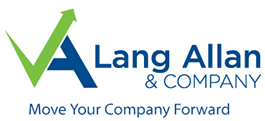There are many types of financial forecasts, but they fall into two categories: quantitative and qualitative. To understand the pros and cons of any forecasting method, you’ll first need to understand which category it falls into.
Quantitative forecasts use analyses of historical data to identify trends and patterns, making them less susceptible to skewing than speculative forecasts. Of course, if you don’t have much historical data to go on, this method will be less effective.
- Pro forma financial statements use sales figures and expected costs from previous years to make forecasts. The three most important documents to include when making financial prognoses are:
- The income statement, which tells how much money comes into your business and how much goes out.
- The cash flow statement, which shows how the money is turned into a profit.
- The pro forma balance sheet, which helps predict required payments, assets and equity.
- Time series analysis involves collecting data for a specific period to identify trends. They’re simple to use and very accurate in the short term.
- The cause-and-effect method has you looking at causal relationships — changes in the disposable income of your customers, consumer confidence, interest rates and the unemployment rate.
Qualitative forecasts are based on intuition and experience. The human mind can see connections between events and understand the context in ways computers can’t. However, we have biases that make it a challenge to process and analyze lots of data accurately. That’s why you should rely on hard data when you have it, but qualitative forecasts are your best bet when historical data is lacking.
- Expert opinions and visions — Get opinions from key personnel in production, sales, procurement and operations to arrive at a forecast.
- Reference forecasts — Base actions on scenarios from other time periods or places. These are based purely on human judgment.
- Delphi method — Create a series of questionnaires and ask a group of experts to fill them out independently of each other. After the results have been collected, send out another set based on the results of the first. Ask the experts to reevaluate the answers they gave before. Keep doing this until you arrive at a shared list of widely held opinions.
- Consumer research — Conduct market research among your customers to eventually generate a forecast.
- Scenario forecasts — Create forecasts based on the outcomes of various scenarios, then look at which is most likely.
The ultimate test is whether you can consistently attract customers. You can use the data from your forecasts to create a number of ancillary predictions, including:
- Sales forecasts. Project your sales up to three years into the future based on historical data. Project your firm’s sales in its first year by using monthly and quarterly data.
- Cost forecast, also called a budget. Calculate the fixed and variable costs for your business. Fixed costs are costs that stay constant, like rent and payroll. Variable costs are costs that you can choose to spend more or less on depending on your goals, like promotions and marketing.
- Cash flow statement forecasts based on balance sheet and sales forecasts. Use past statements to project the future.
- Income statement forecasts, created using the figures from cost forecasts, sales prognoses and cash flow statement predictions.
- Assets and liabilities not included in your profit and loss statement.
Are forecasts reliable? Well, nobody can predict the future; no one can be certain about what will happen. And that’s why financial forecasting is so challenging. But extrapolating from past trends lets you come up with a most likely scenario for the future. The future rarely imitates the past, especially when you consider evolving laws and regulations, the geopolitical order, and economic influences. You don’t want to drive forward while looking in the rearview mirror.
However, you can create a precise forecast. Be thorough and carefully examine and model each input to make the most accurate predictions possible. If done correctly and with the right input from accounting, forecasting finances for your business can help you make projections applicable to your income statement, balance sheet and cash flow.
We can help you to determine what works best for your company. Give us a call today.
